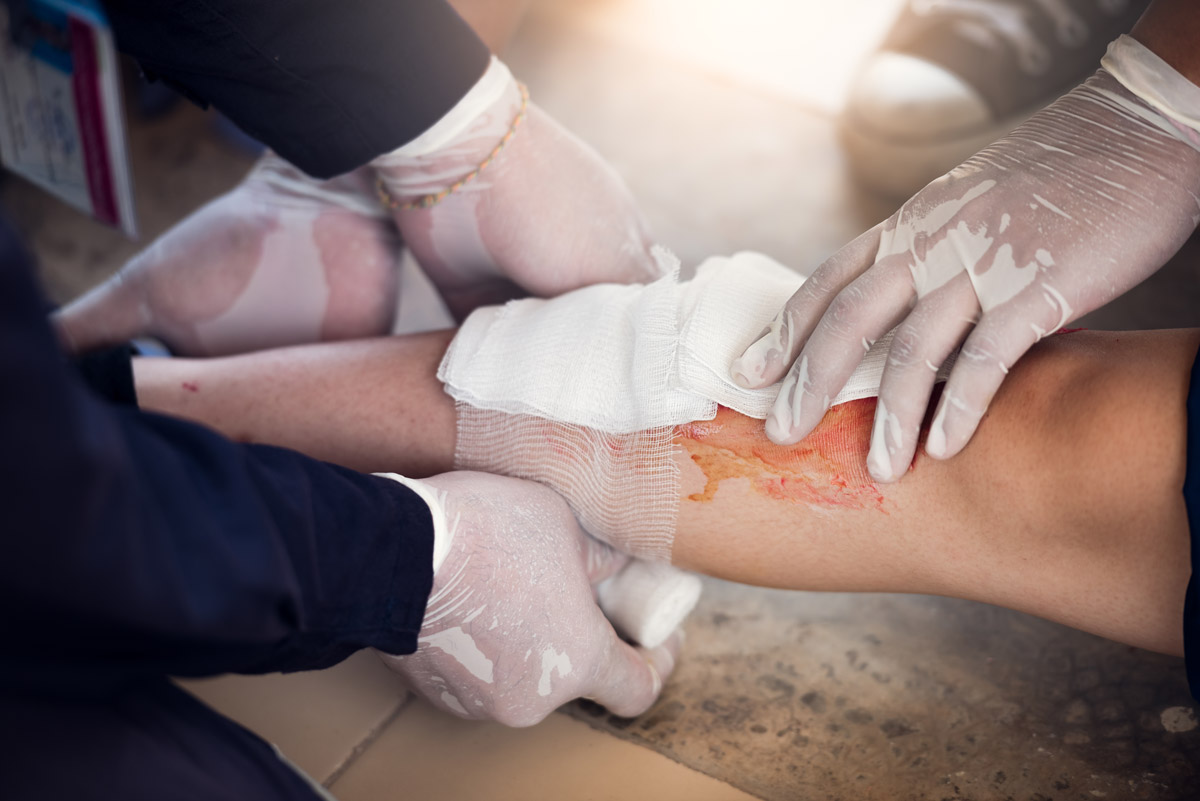Do you know what some of the most common work-related or work-caused injuries are? We’re breaking down the injuries that we see most and how you can protect yourself.
We’ve seen thousands of injuries over the years, especially work-related injuries, and most of us just shrug off our basic injuries that happened at work or make light of them, but they almost always end up being serious; maybe not right away, but ALWAYS in the future. The biggest example that we see is the common phrase “I must have carpal tunnel by now” from students and workers alike, but carpal tunnel is a serious injury that should not be taken lightly. Carpal tunnel is one of the most common work-related injuries.
Work-related injuries are considered any injuries that occur in the workplace that are caused by your job responsibilities, materials, or equipment. For example, factory workers are at high risk for work-related injuries given the equipment they deal with on a daily basis. When you are hurt at work, you are required to (and should) report the injury to your employer and depending on your situation, you are eligible for a workers’ compensation claim.
We handle a lot of workers’ compensation claims, and we’ve seen a lot of injuries over the years. We’ve seen unique, one-of-a-kind injuries, but we’re here to explain some of the most common work-related injuries and what their symptoms are so you know what to look out for and how to protect yourself:
Strains and Sprains
Strains and sprains are actually the most “claimed” injury in workers’ comp claims. Not only are they common, they can also be rather painful and affect your daily life. Strains and sprains can happen in any job and any workplace, but those who work in manual labor or physical labor are more at risk for these injuries. Falling, twisting, and pulling can all cause strains and sprains, especially when lifting objects or performing physical tasks. It’s important to exercise caution when carrying heavy objects, working machinery/equipment, or performing physical labor.
When you sprain or strain a muscle, you will experience a variety of symptoms like pain, swelling, and bruising depending on the severity of the injury. You might even hear or feel a pop at the time of injury, which is definitely a sign for you to seek medical treatment right away.
Common strains and sprains include sprained ankles, sprained wrists, and strained shoulders (or back muscles). These are common in sports and athletics, so you may be familiar with them, but they can happen in the workplace too and can lead to worse injury later on.
Slips, trips, and falls
Slip-and-fall injuries are common across all kinds of jobs. They can happen anywhere and at any time; a wet floor, loose carpeting/rugs, or even foreign objects on the ground can cause a nasty slip or trip. These injuries often result in what is called a “reaction injury”, which is when a person tries to break their fall and ends up hurt as a result. There are also fall injuries, which happen when a worker falls from ladders, scaffolding, or other heightened platforms.
These injuries are common with construction workers, factory workers, and manual laborers. With slips, trips, and falls, it’s common that at the time of injury you do not feel too much pain—don’t be fooled! These injuries take a day or two to develop and can wreak havoc on your body. Even if your injury doesn’t hurt at the time of the accident, you should still report it and seek medical attention immediately.
Thankfully, you are able to protect yourself and prevent these kinds of injuries. You should always navigate your workplace with caution and follow any safety protocol (for example, never climb a ladder without another employee present to help stabilize it from the ground).
Repetitive Stress Injuries
Repetitive stress injuries (RSIs) are very common and are usually the result of repetitive motion or movement in the workplace. Carpal tunnel is a great example of a repetitive stress injury. Anyone from receptionists and graphic designers to factory workers and health aides are at risk for RSIs. The symptoms of these injuries are usually a gradual pain, throbbing, stiffness, and cramping. The area of the injury may feel weak or numb at times, but these symptoms appear over time due to the nature of the injury.
RSIs are harder to prove in a workers’ comp claim since they are gradual and occur over time, but it’s important to report your injury to your employer right away when you notice pain and receive written documentation of your injury.
Contusions and Lacerations
Injuries like contusions or lacerations are usually the result of interacting with machinery or work equipment. While these may sound scary, contusion is a fancy synonym for bruising and laceration is a fancy synonym for cuts, gashes, or scrapes to the skin. These injuries can happen in any kind of work environment, and while these are mostly minor injuries, they can also be more extreme or serious (for example, a deep gash or severed limb).
If not taken seriously, some workers have lost limbs and lost their lives to injuries like these. Contusions and lacerations must always be reported. On the surface, it may look fine, but underneath, a small cut or bruise may cause internal bleeding or infection. Most of the time, a laceration can be prevented by wearing proper safety equipment and handling machinery with the utmost caution.
Staplers & nail guns & power tools, oh my! These are just a small selection of items that can cause a puncture injury if the user is not careful. Puncture wounds can be very deep and narrow, causing a lot of harm to your body. If you find yourself with one of these it is important to get help immediately and report the injury to your employer.
Using proper safety equipment and exercising caution when using tools can save you from a lifetime of pain.
Know Your Risks
The most important thing is that you should know the risks associated with your job before starting work for your employer. Some jobs are at a higher risk of work-related injury than others. Construction workers, manual laborers, and factory workers are all at higher risk of work-related injuries due to the physical requirements of the job as well as the tools and equipment they interact with on a daily basis. That doesn’t mean other jobs don’t have risks. You can get hurt anytime, anywhere. We’ve had clients across all careers, from assembly workers and construction workers to bank tellers and secretaries.
While these injuries are the most common work-related ones, there’s so many others that can happen too. Our best advice is to know your risks and navigate your workplace carefully and responsibly. If you experience a work-related injury, you should always report it to your employer immediately and seek written documentation of said injury (preferably from a medical care provider). Check out our infographic on what to do if you’re hurt at work for more information.
If you or a loved one has been hurt at work, contact us today for a free consultation and see how The Pottenger Law Firm can help.







